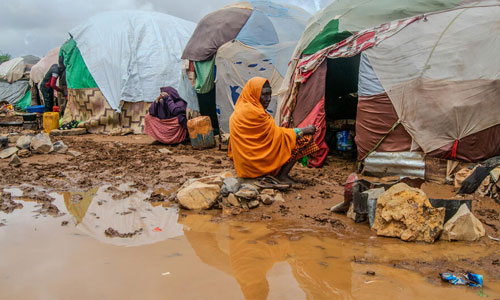The aim is to transform Nigeria’s insurance landscape from one that primarily serves formal, urban populations into a more inclusive system that protects vulnerable, low-income, and disaster-exposed communities — expanding access, relevance, and trust in insurance through tailored products, improved regulation, and innovative delivery mechanisms.
— Nigeria —
protection. equity. reform.










Unlocking Protection: Strengthening Inclusive Insurance and Risk Financing in Nigeria
“Resilience is not built by intention alone—it must be enabled by inclusive, practical financial tools that protect the most vulnerable.”
— Russell Leith, Team Leader, Insurance Finance & Risk, GG International
Challenge
In 2022–2023, Nigeria faced mounting socio-economic and environmental vulnerabilities, with over 70 million people in rural areas, 55% of the population unbanked, and over 90% of the workforce engaged in the informal sector. These realities coincided with increased climate and disaster-related shocks—flooding, droughts, fires—causing devastating displacement, deaths, and economic loss. Despite these risks, existing insurance mechanisms reached only a small fraction of the population, leaving millions unprotected.
The Inclusive Insurance and Risk Financing Diagnostic Study, initiated by the UNDP through its Insurance and Risk Finance Facility (IRFF), aimed to map the current landscape and identify viable interventions. While Nigerian national expert Dr. Omofolarin Alayande produced a comprehensive analysis of the situation, which was then aligned with the other 25 countries in the study and technically validated to guide policy and implementation.
Strategy
To strengthen the final outputs and ensure alignment with international best practices, UNDP engaged Russell Leith, Team Leader of GG International’s Insurance Finance & Risk Division, and Shaan Stevens, the firm’s legal and regulatory insurance expert. Their role was to critically assess, edit, and contribute expert recommendations to the national report.
The team conducted:
- Technical Review of the draft diagnostic covering microinsurance, disaster risk financing (DRF), enabling environments, and market conditions.
- Gap Analysis comparing current inclusive insurance coverage with hazard profiles and underserved demographics.
- Legal Assessment of existing frameworks and regulatory readiness for innovations like parametric insurance, catastrophe risk instruments, and mobile-based microinsurance.
- Strategic Recommendations drawing from global experience—proposing new products (e.g., flood microinsurance in Lagos), alternative distribution models via MFIs and cooperatives, and scalable DRF instruments.
- Stakeholder Feedback Loops to validate assumptions and ensure national ownership of findings.
Transformation
The review significantly enhanced the quality, relevance, and actionability of Nigeria’s Inclusive Insurance and DRF diagnostic:
- Refined National Report: The improved document was endorsed by UNDP and shared with Nigerian regulators, insurance operators, and multilateral partners as a roadmap for reform.
- Recommendations Adopted: Core proposals—such as gender-sensitive microinsurance schemes, disaster coverage extensions, and digital outreach strategies—were integrated into Nigeria’s UNDP risk financing work plan.
- Informed Programming: The work contributed directly to the design of pilot projects under UNDP’s IRFF, supporting regulator capacity building, actuarial training, and policy reform workshops in Nigeria.
- Global Learning Contribution: Nigeria’s diagnostic, as finalized by Leith and Stevens, now serves as a model for similar diagnostics across other countries engaged with the IRFF.
- Development of disaster-specific microinsurance products, particularly flood cover in high-risk states like Lagos.
- Strengthening alternative distribution channels through microfinance institutions, mobile platforms, cooperatives, and agricultural value chains.
- Expanding awareness campaigns and financial literacy programs to build trust and understanding of insurance in underserved communities.
- Introducing gender-inclusive product design and outreach strategies to ensure access for women and female-headed households.
- Supporting regulatory innovation for fast-track product approvals, bundled insurance schemes, and parametric risk transfer mechanisms.
- Building capacity within NAICOM and related institutions to better monitor, regulate, and promote inclusive insurance.